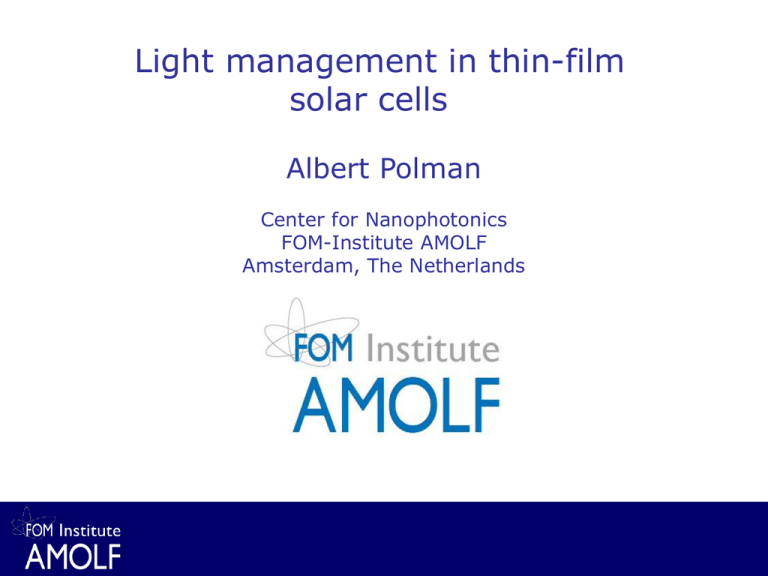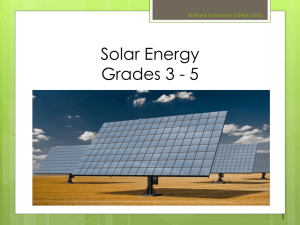Presentation - Photonic Materials Group
advertisement

Light management in thin-film solar cells Albert Polman Center for Nanophotonics FOM-Institute AMOLF Amsterdam, The Netherlands Vanguard satellite 1958 The first practical solar panel (1954) Bell Laboratories (1954) 2010 Price per solar Watt vs. installed power P. Maycock Solar irradiance on earth Black dots: area of solar panels needed to generate all of the worlds primary energy (all energy consumed: electricity, heat, fossil fuels) assuming 8% efficient photovoltaics Available renewable energy sources Solar cell basic geometry Solar cell operation Effects of Rshunt and Rseries on I-V curve Ideal IV curve Low Rsh Rsh = ∞ Rse = 0 High Rse Light is poorly absorbed in a thin-film solar cell Solar spectrum absorbed in 2 m thick Si film “Quantum defect” limits efficiency Photons are quantized energy packets: Eg(Si)=1.1 eV A 2 eV photon will give create max. 1 Volt over the p-n junction A 0.5 eV photon is not absorbed Triple-junction tandem solar cell 1.5 V 1.0 V 0.5 V Record efficiency solar cell Triple-junction tandem solar cell layer geometry From: Richard King (Spectrolab) Efficiency limits of different solar cell types (2010) 3-junction tandem Too expensive crystal Si wafer 2009: CdTe thin film cells costs: < 1 $/W Too low efficiency thin film: CdTe poly-Si amorphous Si organic/polymer dye-sensitized other Materials resources are limited Relative abundance of elements vs. atomic nr. Requirements to construct 1 TW of PV with optically thick cells at 15% efficiency Solutions: 1) Earth Abundant Semiconductors (Si,Cu2O, Zn3P2, FeS2) 2) Enhance Light Absorption/reduce semiconductor volume from P.H. Stauffer et al, Rare Earth Elements - Critical Resources for High Technology, USGS (2002) Photovoltaic materials production and reserve base Si solar cell efficiencies … © Ron Tandberg











